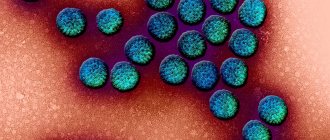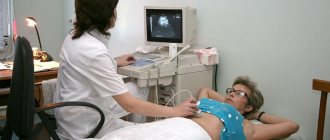Dysbacteriosis in children under one year of age is a common phenomenon. Many parents worry about their baby's intestines and stomach functioning as they should. After all, this determines how quickly the child will gain weight, how well the ingested vitamins and minerals will be absorbed, etc. True, not everyone knows the main symptoms of dysbiosis in infants. And they often panic for no reason.
Infant dysbiosis
Before being born, the baby is in a completely sterile environment and there are no microorganisms in its gastrointestinal tract. At birth, moving along the birth canal, the baby first encounters the mother’s natural microflora, which normally contains bifidobacteria and lactobacilli, as well as E. coli. In the future, he also “gets acquainted” with the bacteria located in the mother’s mouth and skin. This promotes the colonization of the child’s gastrointestinal tract with normal microflora.
Ideally, a baby who is completely breastfed has 95-99% lacto- and bifidobacteria in the intestinal microflora. And only a small part are the so-called “neutral” bacteria, which have neither positive nor negative effects. These include Escherichia coli, micrococci, enterococci, clostridia, and bacteroides.
If some unfavorable factors are present (lack of natural feeding, late breastfeeding, use of antibiotics), then the balance of microflora may be disturbed, which can lead to adverse consequences for the infant’s fragile body.
Causes of dysbiosis in an infant
In infancy, dysbiosis can appear due to the following reasons:
Many experts believe that the child’s body must cope with dysbacteriosis on its own and it is not at all necessary to treat it. maternal health problems that arise during pregnancy;- pathologies during childbirth;
- infections;
- primary immunodeficiency;
- physiological immaturity of the gastrointestinal tract;
- artificial feeding, introduction of dairy products into the baby’s diet at an early age;
- late attachment to the mother's breast;
- antibacterial and hormonal drugs used by mother and baby;
- stress and unfavorable conditions in which the baby lives.
Symptoms
Dysbacteriosis manifests itself in children with diarrhea, sleep disturbances and anxiety, tearfulness, a tendency to allergic dermatitis and rashes. These symptoms in themselves are not a reason to make a diagnosis, but should make parents wary.
Characteristic signs of dysbiosis in infants are as follows:
- pale skin;
- flatulence;
- loss of appetite;
- lethargy;
- frequent colic;
- dry skin;
- stomach ache;
- rash, allergy symptoms;
- stomatitis and thrush in the mouth;
- constipation;
- irritability;
- diarrhea lasting more than three days;
- vomiting, nausea, profuse and frequent regurgitation;
- insufficient weight gain;
- presence of blood, foam, green mucus in the stool.
It should be noted that when complementary foods are introduced, there may be a temporary change in the child’s stool, green mucus, diarrhea, allergic rash, and a change in the frequency of bowel movements. Usually these symptoms do not require treatment and go away on their own. Otherwise, you need to look for their reasons. If you notice unpleasant symptoms, show your baby to a specialist.
Degrees of dysbacteriosis
Pediatricians distinguish four degrees of dysbiosis in infants:
- 1st degree. The baby's appetite is disturbed and he is not gaining weight well. Flatulence appears, feces become colorless. The most common cause is poor diet or food allergies. The condition is not dangerous.
- 2nd degree. Characterized by flatulence, abdominal cramps, lack of appetite, constipation or diarrhea. The stool is green, foul-smelling, and contains undigested food. Laboratory testing can detect fungi, Proteus, and staphylococci.
- 3rd degree. Pathogenic microorganisms multiply. The baby may have chronic diarrhea, feces have a rotten smell and a greenish color, and a large number of lumps of undigested food. Immunity deteriorates significantly, symptoms of rickets, rash, flatulence, nausea, and colic are possible. The baby may lose appetite and may feel generally unwell.
- 4th degree. The microflora contains a huge number of pathogenic microorganisms that can cause salmonellosis, dysentery and other infectious pathologies. Harmful microorganisms can enter other organs and provoke inflammatory processes in any organ. A lot of toxins accumulate, which leads to weakness, poisoning, headaches, and fever. Diarrhea can become chronic, and the stool has a putrid odor. The child suddenly loses weight, becomes nervous, and has signs of vitamin deficiency and anemia.
About the disease
Dysbacteriosis is not a separate disease.
This is a pathological syndrome that occurs against the background of primary pathologies of internal organs or the influence of provoking factors, accompanied by an increase in the number of harmful bacteria in the baby’s intestines. Because of this, digestion worsens and the patient’s general well-being is disrupted. It is worth noting that the term “dysbiosis” appears separately in the literature. Dysbiosis is a problem caused by an imbalance of exclusively bacterial flora, when dysbiosis is a violation of the relationship between all microorganisms (bacteria, fungi, and sometimes viruses).
Newborns and infants are the widest risk group for intestinal microflora disorders. The reason is the immaturity of the intestines, which is gradually filled with both beneficial and harmful bacteria.
There are transient (up to 7 days after birth) and true dysbiosis (after 7 days) in a child. And therefore, in 70-80% of cases, parents should not panic. With adequate care for the baby and treatment (if necessary), the signs of internal imbalance disappear quite quickly.
Diagnostics
When diagnosing, the doctor analyzes the symptoms and prescribes some tests:
- coprogram - allows you to determine the degree of digestion of food in the intestines;
- stool culture for opportunistic microflora - reveals the percentage of obligate bacteria;
- stool culture for dysbacteriosis - determines the ratio of healthy and pathogenic microflora and its sensitivity to antibiotics;
Fresh feces of a child (at least 10 grams) must be collected in a special container or a clean glass container. It cannot be stored at room temperature, otherwise the results will not be reliable. It should also be taken into account that if your baby is taking probiotics before collection, they should be discontinued.
Treatment
Parents should not be afraid of the diagnosis, since modern medicine does an excellent job of treating it. Therapy will be faster and easier if the causes of the pathology are determined. If you notice symptoms of dysbiosis in a baby, show it to the doctor as soon as possible - he will diagnose it and prescribe adequate treatment.
Tactics for treating dysbacteriosis
To successfully treat dysbacteriosis in an infant, it is necessary to strictly follow the doctor’s instructions and not engage in “amateur activities.” Treatment is usually quite long. We need special medications that contain live lacto- and bifidobacteria. The treatment regimen is determined by the doctor. Usually, medications that eliminate pathogenic microorganisms are first prescribed, and in parallel with them, sorbents are prescribed to remove toxins from the body.
In the future, tactics are aimed at populating the microflora with beneficial bifidobacteria and lactobacilli using medications and milk formulas. In order to maintain intestinal health, it is recommended that all family members lead a healthy lifestyle.
If the child is still breastfed, then an important point in treatment is the normalization of the mother’s nutrition. You need to consume more fermented milk products and give up fast food, sauces and other harmful foods.
If complementary foods are already being introduced into your baby’s diet, give him fermented milk products every day.
Treatment of dysbiosis with medications
To treat the disease, lactulose preparations are widely used, which are completely safe and well tolerated by children.
Children are often prescribed Linex, which includes bacteria aimed at restoring normal intestinal microflora. The medication is available in capsules. Before use, the capsule must be opened, then its contents must be mixed with a small amount of water. It is also used to prevent dysbiosis during antibiotic treatment.
The main drugs in the treatment of dysbiosis in infants are probiotics and bacteriophages, such as Linex, Enterol, Acipol, bifidumbacterin, bifiform and others. They contain beneficial microorganisms that help restore normal intestinal microflora, as well as vitamins that are necessary to maintain immunity.
Folk remedies
There are many recipes for folk remedies for the treatment of dysbiosis, but not all of them are suitable for children. For example, children may categorically refuse to use herbal infusions. For children, you can use special folk remedies with a pleasant taste. Some healthy dishes are recommended to be included in the children's menu to prevent abnormalities in the intestinal microflora and reduce immunity.
Kefir drink with dried fruits:
- Prepare several types of dried fruits (dried apricots, prunes, figs).
- Pour hot water over the preparation (the dried fruits should swell within an hour).
- Grind the dried fruits (you can simply cut them with a knife).
- Pour a tablespoon of the preparation into a glass of kefir and mix the drink thoroughly.
- For younger children, dried fruits can be crushed in a blender.
- It is recommended to drink the drink in the morning.
- The product not only improves the condition of the digestive system, but also improves immunity.
Elderberry and rosehip decoction:
- Combine 100 g of rose hips and elderberries.
- Pour the workpiece with hot water (600 ml).
- Boil the broth for twenty minutes over low heat.
- After filtering and cooling, the drink is ready to drink.
- The product can only be used for children over four years of age.
- The decoction should be consumed in small portions before main meals (three times a day).
Honey-banana paste:
- Mash half a banana with a fork.
- Mix the preparation with a teaspoon of honey.
- It is recommended to use the product for breakfast.
- The child must be excluded from an allergic reaction to honey.
Sweet paste made from seeds, figs and dried apricots:
- Combine pumpkin, sunflower, flax seeds, chopped dried apricots and figs in equal quantities.
- Grind the workpiece in a blender.
- The paste can be eaten with cookies or on its own.
- It is recommended to use this remedy before breakfast and dinner (a teaspoon).
Berry paste:
- Crush lingonberries, raspberries and cranberries (you can chop them in a blender).
- It is allowed to add sugar or honey to the preparation (to improve the taste).
- The product should be consumed after breakfast and dinner (a teaspoon).
Video on the topic: Intestinal dysbiosis, symptoms and treatment in children.
Analysis transcript
In healthy babies, the norm is a content of 107-108 CFU/g of E. coli. Analysis of stool for intestinal microflora allows you to obtain information about the presence of certain microorganisms.
Enterobacteriaceae are part of the pathogenic flora; they can cause a lot of diseases, in particular intestinal infections. These include Salmonella and Shigella.
E. coli is part of the normal microflora. Such bacteria create a kind of barrier in the body that protects against the penetration of pathogenic flora.
Lactose-negative enterobacteria belong to pathogenic microflora. Their normal amount is no more than 5%.
To maintain healthy microflora, lacto- and bifidobacteria are needed. When their number decreases, we can talk about dysbacteriosis. The attending physician interprets the test results.
- If you have any symptoms of the disease, you should immediately consult a doctor. You can view a list of gastroenterology clinics on our website
- You will be interested! The article describes symptoms that make it possible to suspect the presence of liver disease in the early stages
- You will also be interested in learning more about the treatment of various diseases of the gastrointestinal tract
What do the analysis results say?
You should not try to decipher the results yourself. The information is very specific, the indicators are unusual for clinical laboratories. The form shows the entire intestinal microflora by type and number. Quantification is carried out in CFU (colony-forming units) per gram of material (stool). This indicator reflects the potential of microorganisms to spread.
The quantity must be presented as a ten with an exponent or many zeros. For each type of microorganism, there are norms of lower and upper limits. Dysbacteriosis is judged by deviations. The presence or absence of pathogenic pathogens is marked (+) or (-).
Why is dysbacteriosis dangerous?
If left untreated, dysbiosis can provoke various complications that can negatively affect the immune system and the development of the body as a whole. Possible negative consequences of the disease are as follows:
- anemia;
- lack of vitamins and minerals in the body;
- lack of weight gain;
- frequent infectious pathologies;
- gastrointestinal pathologies;
- allergic reactions.
If you are breastfeeding your baby and the child is gaining weight well, then dysbacteriosis is impossible for him.
Forecast
Compliance with the diet and all the specialist’s instructions allows you to get rid of dysbacteriosis within one month. The duration of therapy can be increased if the child has complications, congenital pathologies of the digestive system or chronic gastrointestinal diseases. In the absence of adequate treatment and violation of nutritional rules, the prognosis will be unfavorable.
Dysbacteriosis can cause serious abnormalities in the digestive tract, which will reduce the baby’s quality of life.
Prevention of dysbacteriosis in infants
If there is a risk of dysbacteriosis, it is recommended to take preventive measures. For this purpose, doctors often prescribe drugs to restore microflora - this is especially important when using antibiotics.
Also, preventive measures are as follows:
- Early latching of the baby at the breast. This contributes to the formation of strong body defenses and populates the intestines with beneficial bacteria.
- Breast-feeding. But if the child is on an artificial one, then do not despair. You can choose milk formulas that will provide the child’s body with everything it needs.
- Proper and balanced nutrition for the mother.
- Parents' concern for their health when planning pregnancy and during pregnancy.
- Healthy lifestyle of parents in general.
If you follow the specialist’s recommendations regarding treatment and nutrition, you can usually get rid of dysbiosis within a month. If there are concomitant chronic diseases of the gastrointestinal tract, more time may be required.
Intestinal microflora in children
The intestinal microflora consists of various types of microorganisms that live in various parts of the digestive organ. In a normal state, these bacteria do not cause harm to the body and are involved in many metabolic processes. Human waste products are an ideal habitat for them.
Bacteria produce substances necessary to ensure the functioning of the digestive system, natural bowel movements and increase local immunity.
The role of bacteria that make up the intestinal microflora for the child’s body:
- completion of food digestion processes;
- synthesis of nutrients, vitamins and enzymes;
- increasing local and general immunity;
- ensuring the absorption of useful elements in the intestines;
- binding and removing toxins and other harmful substances from the body;
- protecting the body from pathogenic microorganisms;
- ensuring normal contraction of the intestines;
- neutralization of toxic effects on the digestive system;
- stimulating the process of bowel movement.






